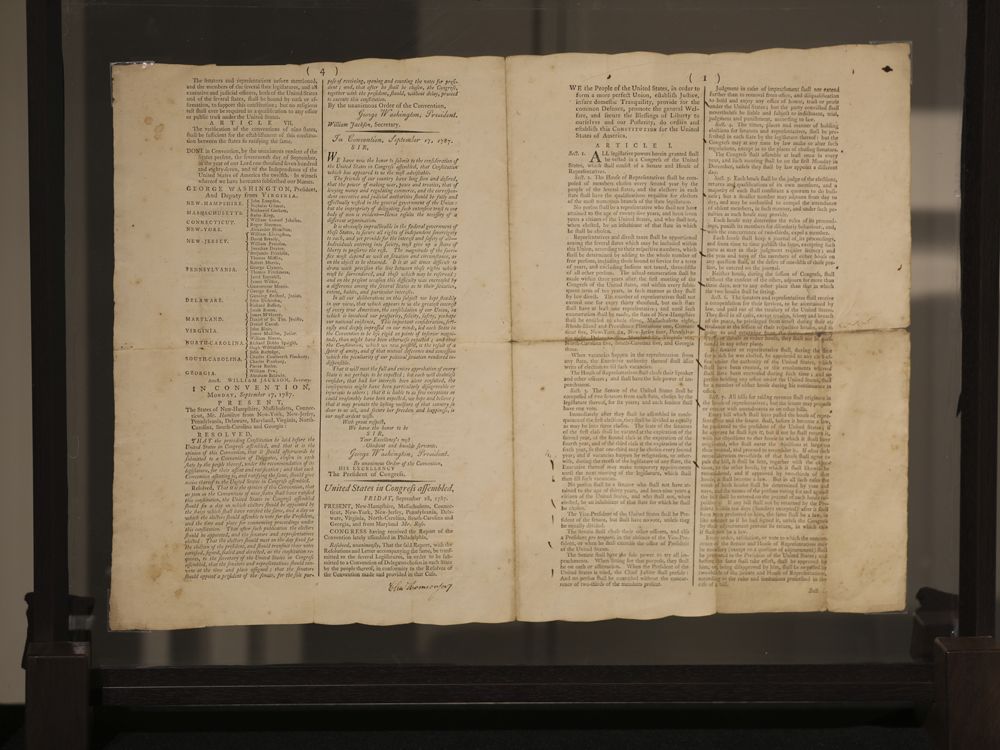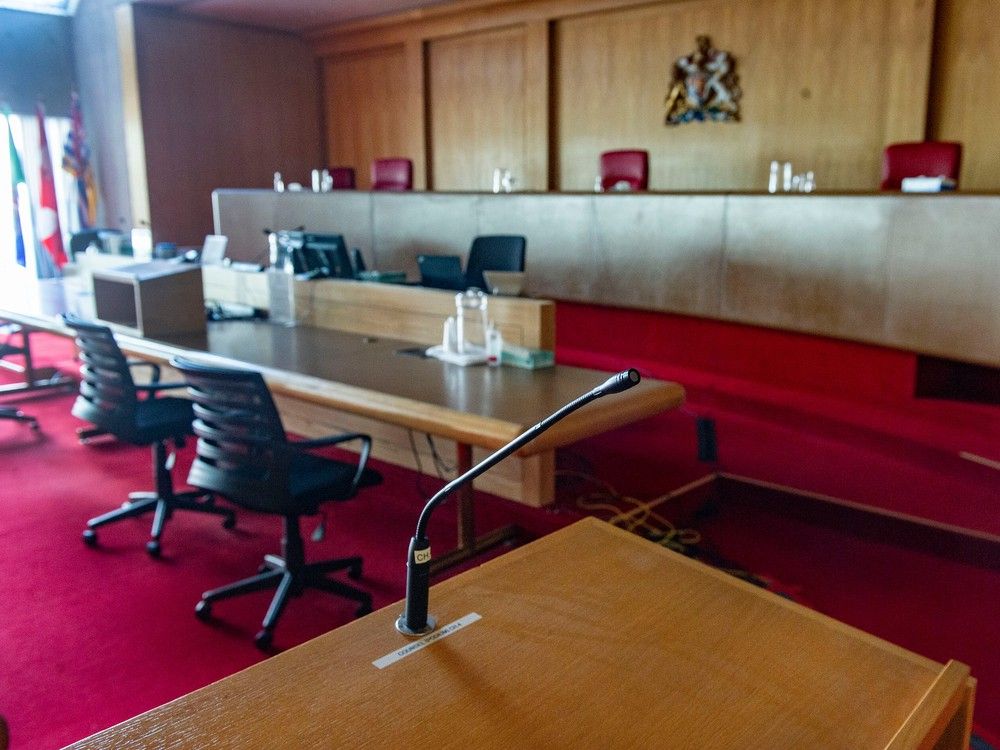Author of the article:
Associated Press
Jon Gambrell
Published Oct 17, 2024 • 4 minute read

DUBAI, United Arab Emirates — The U.S. military unleashed B-2 stealth bombers to target underground bunkers used by Yemen’s Houthi rebels early Thursday, a major escalation in the American response to the rebels’ attacks on Mideast shipping lanes that appeared to be a warning to Iran as well.
Advertisement 2
THIS CONTENT IS RESERVED FOR SUBSCRIBERS ONLY
Subscribe now to read the latest news in your city and across Canada.
- Unlimited online access to articles from across Canada with one account.
- Get exclusive access to the Toronto Sun ePaper, an electronic replica of the print edition that you can share, download and comment on.
- Enjoy insights and behind-the-scenes analysis from our award-winning journalists.
- Support local journalists and the next generation of journalists.
- Daily puzzles including the New York Times Crossword.
SUBSCRIBE TO UNLOCK MORE ARTICLES
Subscribe now to read the latest news in your city and across Canada.
- Unlimited online access to articles from across Canada with one account.
- Get exclusive access to the Toronto Sun ePaper, an electronic replica of the print edition that you can share, download and comment on.
- Enjoy insights and behind-the-scenes analysis from our award-winning journalists.
- Support local journalists and the next generation of journalists.
- Daily puzzles including the New York Times Crossword.
REGISTER / SIGN IN TO UNLOCK MORE ARTICLES
Create an account or sign in to continue with your reading experience.
- Access articles from across Canada with one account.
- Share your thoughts and join the conversation in the comments.
- Enjoy additional articles per month.
- Get email updates from your favourite authors.
THIS ARTICLE IS FREE TO READ REGISTER TO UNLOCK.
Create an account or sign in to continue with your reading experience.
- Access articles from across Canada with one account
- Share your thoughts and join the conversation in the comments
- Enjoy additional articles per month
- Get email updates from your favourite authors
Article content
While it wasn’t immediately clear how much damage the strikes caused, the attack appeared to be the first use of the B-2 in combat in years and the first time the flying wing targeted sites in Yemen.
In announcing the strikes against the Houthis, who have been attacking ships for months in the Red Sea corridor over the Israel-Hamas war in the Gaza Strip, U.S. Defense Secretary Lloyd Austin made a point to offer a warning likely heard in Tehran as well.
“This was a unique demonstration of the United States’ ability to target facilities that our adversaries seek to keep out of reach, no matter how deeply buried underground, hardened or fortified,” Austin said.
Iran, the Houthis’ main benefactor, has targeted Israel with ballistic missile attacks twice over the past year. The B-2 would be used in any American attack on hardened Iranian nuclear facilities like Natanz or Fordo given it is the only aircraft in service that can drop the GBU-57, known as the “Massive Ordnance Penetrator.”
By signing up you consent to receive the above newsletter from Postmedia Network Inc.
Article content
Advertisement 3
Article content
Iran offered no immediate comment on the strike Thursday. Its foreign minister has been visiting Arab nations ahead of an expected Israeli retaliatory strike over Tehran’s Oct. 1 missile assault.
The Houthis’ al-Masirah satellite news channel reported airstrikes around Yemen’s capital, Sanaa, which the group has held since 2014. They also reported strikes around the Houthi stronghold of Saada. They offered no immediate information on damage or casualties.
Austin said the B-2 bombers targeted “five hardened underground weapons storage locations in Houthi-controlled areas of Yemen.” Both he and the U.S. military’s Central Command offered no immediate assessment on the damage done. However, Central Command said it believed no civilians had been killed.
Advertisement 4
Article content
The Red Sea has become a battlefield for shippers since the Houthis began their campaign targeting ships traveling through the waterway, which once saw $1 trillion of cargo pass through it yearly.
Houthis have targeted more than 80 merchant vessels with missiles and drones since the war in Gaza started in October 2023. They have seized one vessel and sunk two in the campaign that has also killed four sailors. Other missiles and drones have either been intercepted by a U.S.-led coalition in the Red Sea or failed to reach their targets, which have included Western military vessels.
The rebels maintain that they target ships linked to Israel, the U.S. or the United Kingdom to force an end to Israel’s campaign against Hamas in Gaza. However, many of the ships attacked have little or no connection to the conflict, including some bound for Iran.
Advertisement 5
Article content
The Houthis also continue to launch missiles targeting Israel and have shot down U.S. military MQ-9 Reaper drones. The rebels have threatened new attacks in response to Israel’s ground invasion of Lebanon and its killing of Hezbollah leader Hassan Nasrallah.
Hamas’ initial Oct. 7, 2023, attack on Israel that sparked the war killed some 1,200 people and saw 250 others taken hostage. Israeli miltary action in the time since has killed over 42,000 Palestinians in the Gaza Strip, hundreds more in the West Bank and over 2,300 people in Lebanon. Meanwhile, the combat edges ever closer to a full-on regional war.
The locations named by the Houthis on Thursday correspond to known underground bases operated by the rebels, who have been locked into a stalemated war with a Saudi-led coalition since 2015 that’s decimated the Arab world’s poorest nation.
Advertisement 6
Article content
The Houthis have refurbished tunnels that once held Scud missiles when Yemen was ruled by strongman Ali Abdullah Saleh, according to an analysis in April by the International Institute for Strategic Studies. Those sites include the al-Hafa and Jebel Attan military bases, the former Presidential House and the Yemen state television compound in Sanaa, analyst Fabian Hinz wrote.
The Houthis have built what appears to be their own large-scale tunnel network near Saada as well, Hinz added.
“The fact that the Houthis began constructing major new installations after the agreement of the cease-fire with the Saudi-led coalition suggests that the group is focused on entrenching themselves and bolstering their military capabilities,” he wrote. Iran similarly relies on a network of underground missile bases.
Advertisement 7
Article content
The nuclear-capable B-2, which first saw action in 1999 in the Kosovo War, is rarely used by the U.S. military in combat as each aircraft is worth some $1 billion. It has dropped bombs in Afghanistan, Iraq and Libya as well. The aircraft are based at Whiteman Air Base in Missouri and typically conduct long-range strikes from there, though some B-2s were in Australia in September.
The U.S. last used the B-2 in combat in 2017 against Islamic State group targets in Libya, killing more than 80 fighters in a mission defence officials at the time said disrupted possible militant attacks in Europe.
The B-2’s use in Yemen comes just two days after UN Special Envoy Hans Grundberg warned Yemen’s frozen war could heat back up given the Mideast wars and the Houthis’ taking captive UN and aid workers in an internationally criticized crackdown.
“This cycle of retaliation is pulling Yemen deeper into the regional conflict, jeopardizing its hopes for peace and stability,” Grundberg said Tuesday. “Moreover, it distracts from the urgent need to address Yemen’s own internal crisis.”
Article content
.png)
 11 hours ago
10
11 hours ago
10


































 Bengali (BD) ·
Bengali (BD) ·  English (US) ·
English (US) ·